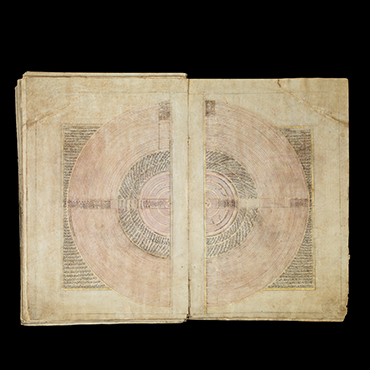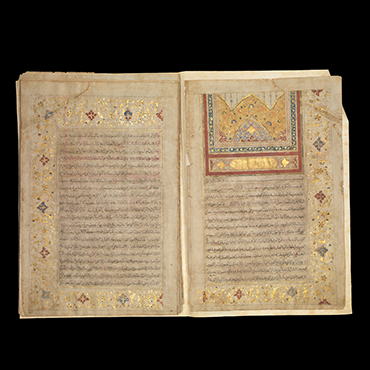Calouste Sarkis Gulbenkian (AH 1285–1374/1869–1955 CE) was an Armenian businessman, art collector, and philanthropist. Born in Istanbul, he spent most of his adult life in London and Paris, moving to Lisbon in AH 1361/1942 CE. A pioneering career in the petroleum industry provided the means to invest in art. From the AH 1310s/1890s CE until AH 1372/1953 CE, Gulbenkian assembled an exceptional and eclectic collection of over 6,000 objects from Europe and Asia, from antiquity to the early twentieth century. At his death, the collection became part of a philanthropic foundation bearing his name, and in AH 1388/1969 CE, a museum was inaugurated in Lisbon that preserves his legacy.
Gulbenkian regarded himself as an “Oriental collector”, acquiring some 750 works of Islamic art over the course of his life. While admirably fulfilling his criterion for exquisite quality, the collection is not encyclopedic. Gulbenkian preferred brilliant colors and naturalistic vegetal ornament, and the highlights of his collection include superb assemblages of Mamluk enameled glass, Safavid arts of the book, carpets and textiles, and Ottoman Iznik ceramics and tiles.
Located in a garden in the center of Lisbon, the Gulbenkian Museum is a major landmark of modernist architecture. Lisbon’s Central Mosque lies just to its west and the proximity of the Muslim community has inspired a variety of initiatives, including the Power of the Word. Since AH 1441/2019 CE, these programs have sought to bring fresh perspectives to the Islamic collection through vibrant, contemporary interpretations. The Gulbenkian Museum joins AlMadar with a version of its most recent exhibition, Circles of Knowledge, focusing on a rare, recently discovered manuscript of the Tuhfat al-Khaqan (The Emperor’s Gift) as well as a group of ceramics with circular inscriptions.

Circles of Knowledge and Tables of Numbers
A manuscript of the Tuhfat al-Khaqan: Dawa’ir al-‘Ulum wa-Jadawil al-Ruqum (The Emperor’s Gift: Circles of Knowledge and Tables of Numbers) copied in Iran or Iraq around AH 1214/1800 CE was rediscovered recently at the Gulbenkian Museum. Its 90 pages comprise 69 circular diagrams and 38 tables. Although this copy was damaged by flooding in AH 1386/1967 CE, it is among the finest of eight known copies, one of which is in the King Abdulaziz Public Library, Riyadh.
The author of “The Emperor’s Gift”, Mirza Muhammad Akhbari, was born in Lucknow, India, in the early 13th century AH/19th century CE into a family of Persian origin. He later moved to Kadhimiya, near Baghdad, where “The Emperor’s Gift” was composed. Its circular diagrams and tables incorporate ideas and data derived from other well-known works and theories of knowledge, including cosmogony, astronomy, hadith and tenets of faith, ethics, psychology, history, and geography.
The circle was considered the perfect geometrical form—Mirza Muhammad chose to reformat fields of knowledge within circles as a means of making complex ideas accessible. Circular patterning corresponds with cognitive perceptions of the movement of the earth and planets, thought since antiquity to orbit in circles. Each circular diagram is also a puzzle to be deciphered and contemplated.
Tuhfat al-Khaqan
of Mirza Muhammad Akhbari
Iran or Iraq, c. AH 1214/1800 CE
Black ink, gold, silver, and opaque watercolor on paper, h. 35 × w. 48 cm
Calouste Gulbenkian Foundation, Lisbon, LA256, fols 2v–3r

